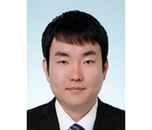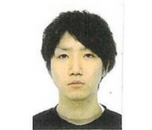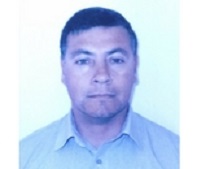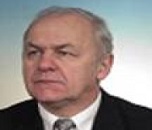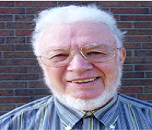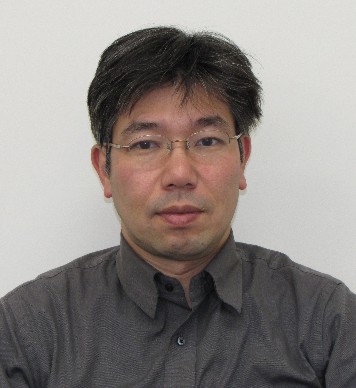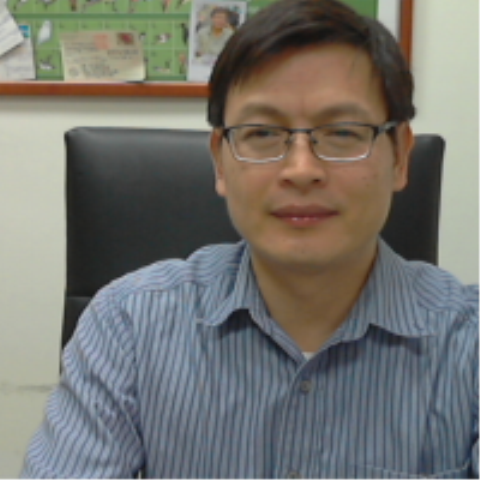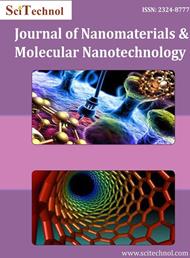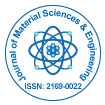Conference Series LLC LTD is a prestigious association that sorts out 1000+ Global Events Every Year over the USA, Europe and Asia with help from 1000 progressively logical social orders and Publishes 700+ Open access journals which contain more than 1,00,000 famous characters, presumed researchers as article board and arranging advisory group individuals. Conference Series LLC LTD Conferences make the ideal stage for worldwide systems administration as it unites famous speakers and researchers over the globe to a most energizing and paramount logical occasion loaded up with a lot of illuminating intelligent sessions, universal workshops, world-class global shows and notice introductions.
NANO TECH - 2020 respects every one of the partners far and wide which will be held during June 26, 2020 in London, UK( GMT+4).
The imaginative and rising nanotechnologies have altogether reshaped the assembling, biotechnology, electronic, natural and pharmaceutical markets. Top to bottom market examination of these advancements just as patterns, estimates and profiles of significant players from various diagnostic reports from different experts demonstrate how important the development of nanotechnology has progressed toward becoming. Effectiveness of nanotechnology has prompted extraordinary revelations in physician endorsed tranquilize items, photonics and bio nanomaterial and biosensors.
NANO TECH 2020 aims to bring together leading academic scientists, researchers and research scholars to exchange and share their experiences and research results on all aspects of Nanotechnology. It also provides a premier interdisciplinary platform for researchers, practitioners and educators to present and discuss the most recent innovations, trends, and concerns as well as practical challenges encountered and solutions adopted in the fields of Nanotechnology.
We welcome all interested participants to join us for our webinar on 17th Nanotechnology and Nanomedicine congress in London, UK.
Our Conference will provide a perfect platform to enlighten knowledge through:
-
Innovative talks by the experts of the global scientific community
-
Sterling workshop and sessions
-
Remarkable Awards and Global Recognition to meritorious Researchers
-
Global Networking with 50+ Countries across the globe
-
Novel Techniques to Benefit Your Research
-
Global Business and Networking Opportunities
-
Exquisite Platform for showcasing your products and International Sponsorship
-
Nanotechnology Professionals
-
Directors of companies in the field of Nanotechnology
-
Leading scientists
-
Biomedical Engineering
-
Medicine and Pharmaceuticals
-
Professors
-
Fellows or postdoctoral students
-
Researchers, CEOs
-
Business Delegates
-
Doctors
-
Young research scientists
-
Medical Colleges
-
Nanotechnology Associations and Societies
-
Manufacturing Medical Devices Companies
-
Healthcare professionals
-
Founders and Employees of the related companies
-
Clinical investigators
Conference Highlights:
-
Nanotechnology
-
Nanomedicine
-
Novel drug delivery
-
Nanomaterial’s
-
Design of Nano drugs
-
Approaches in Nanotechnology
-
Nano biotechnology
-
Nano photonics
-
Nano chemistry
-
Forensic Nanotechnology
-
Nano electronics
-
Nanophysics
-
Nano robotics
-
Cancer nanotechnology
-
Nano structures
-
Nano biosensors
-
Nano devices
-
Nanotechnology in tissue engineering
-
Development in nanotechnology
-
Nanoparticles in photo dynamic therapy
-
Future challenges in Nanotechnology
Nanotechnology manages the investigation of littler structures with a size range between 0.1 to 100 nm. It covers different regions like biophysics, atomic science, and bioengineering and sub strengths of medication, for example, cardiology, ophthalmology, endocrinology, oncology, immunology and so forth... Pharmaceutical Nanotechnology applies the techniques and standards of
Nanoscience and Nano medication. Pharmaceutical nanotechnology is currently settled as specific region for medication conveyance, diagnostics, prognostic and treatment of ailments through its
Nano-designed apparatuses.
-
Polymeric Nano particles
-
Dendrimers
-
Metallic Nano particles
-
Polymeric micelles
-
Liposomes
Nano medicine is the next wave of advancements in the
healthcare space. Nano medicine is nanotechnology focused on medical intervention at the molecular scale for repair of tissues and treatment of disease. This field combines the expertise of
medicine, mathematics, biology, engineering, chemistry, and computer science for the creation of devices for human application. Today, Nano medicines are used globally to improve the treatments and lives of patients suffering from a range of disorders including ovarian and breast cancer,
kidney disease, fungal infections, elevated cholesterol, menopausal symptoms, multiple sclerosis, chronic pain,
asthma and emphysema. The Nano medicines can play an important role in ensuring enough of the drug enters the body, that drug that does enter stays in the body for long periods and is targeted specifically to the areas that need treatment.
Development of a current medication atom from a customary structure to a novel conveyance framework can essentially improve its presentation as far as patient consistence, security and adequacy. As a Novel Drug Delivery System a current medication particle can get another life. A fittingly planned Novel Drug Delivery System can be a meaningful step forward for tackling the issues related towards the arrival of the medication at explicit site with explicit rate. The requirement for conveying medications to patients productively and with less symptoms has incited pharmaceutical organizations to participate in the advancement of new medication conveyance framework. Controlling the
pharmacokinetics, pharmacodynamics, vague lethality, immunogenicity, bio acknowledgment, and viability of medications were produced. These new methodologies, frequently called drug delivery system (DDS), depend on interdisciplinary methodologies that join polymer science,
pharmaceutics, bio conjugate science, and atomic science.
Nanomaterials are defined as materials composed of unbound particles or as particles in an aggregate or agglomerate state with one or more external dimensions with a size ranging from 1 to 100nm. Nanomaterials are chemical substances or materials that are manufactured and used at a very small scale.
Nanomaterial’s are developed to exhibit novel characteristics compared to the same material without nanoscale features, such as increased strength, chemical reactivity or conductivity.
-
Nanotubes
-
Nano wires
-
Nano cantilevers
-
Nano shells
-
Quantum dots
-
Nano pores
-
Gold nanoparticles
-
Bucky balls
Until this point in time, different Nano sedate frameworks have been created for various courses of organization, which incorporate dendrimers, Nanocrystals, emulsions, liposomes, strong lipid nanoparticles, micelles, and polymeric nanoparticles. Nano sedate frameworks have been utilized to improve the viability, security, physicochemical properties, and pharmacokinetic/pharmacodynamics profile of pharmaceutical substances. Specifically, functionalized Nano sedate frameworks can offer improved
bioavailability of orally consumed medications, delayed
half-life of infused drugs (by decreasing immunogenicity), and focused on conveyance to specific tissues. In this manner, Nano drug systems might lower the frequency of administration while providing maximized pharmacological effects and minimized systemic side effects, possibly leading to better therapeutic compliance and clinical outcomes.
Two main approaches are used in nanotechnology. In the "
bottom-up" approach, materials and devices are built from molecular components which assemble themselves chemically by principles of molecular recognition. In the "
top-down" approach, Nano-objects are constructed from larger entities without atomic-level control.
-
Bottom up
-
Top down
-
Biomimetic
-
Functional
-
Speculative
Nano biotechnology is the application of nanotechnologies in biological fields. Chemists, physicists and
biologists each view nanotechnology as a branch of their own subject and collaborations in which they each contribute equally are common. One result is the hybrid field of
Nano biotechnology that uses biological starting materials, biological design principles or has biological or medical applications. The integration of nanomaterials with biology has led to the development of
diagnostic devices, contrast agents, analytical tools, therapy, and drug-delivery vehicles, bio nanotechnology research is still in its infancy.
Nanophotonics or Nano-optics is the study of the behaviour of light on the nanometre scale, and of the interaction of nanometre-scale objects with light. It is a branch of optics, optical engineering, electrical engineering, and nanotechnology.
Nanophotonics focuses on the
interaction of photons with Nano-structures, such as carbon Nano-tubes, Nano metal particles, Nano crystals, semiconductor Nano dots, photonic crystals, tissue and DNA.
Nano chemistry is the combination of chemistry and Nano science. It deals with the chemical applications of nanomaterials in nanotechnology
. Nano chemistry involves the study of the synthesis and characterisation of materials of
Nano scale size is associated with synthesis of
building blocks which are dependent on size, surface, shape and defect properties. Nano chemistry is a relatively new branch of chemistry concerned with the unique properties associated with assemblies of atoms or molecules of nanoscale (~1-100 nm), so the size of nanoparticles lies somewhere between individual atoms or molecules and larger assemblies of bulk material which we are more familiar with.
-
Physical techniques allow atoms to be manipulated and positioned to specific requirements for a prescribed use.
-
Traditional chemical techniques arrange atoms in molecules using well characterised chemical reactions.
Nanotechnology is promising to have a significant contact with the most recent advancements in the recognizable proof of inactive
fingerprints. Inactive fingerprints are stores left by a blend of discharges from the perspiration and sebaceous organs in the skin. They are undetectable and require the utilization of optical systems or, all the more ordinarily, advancement specialists, for example, powders to uncover the print. The uniqueness of fingerprints to recognize people had been suspected quite a while prior. Fingerprints are one of just two human qualities that are one of a kind to an individual, the other being
DNA.
Nano electronics is the term used in the field of nanotechnology for electronic components and research on improvements of electronics such as display, size, and power consumption of the device for the practical use. This includes research on memory chips and surface physical modifications on the electronic devices. Nano electronics cover quantum mechanical properties of the hybrid material,
semiconductor, single dimensional nanotubes, nanowires, and so forth. Well-developed Nano electronics can be applied in different fields, and are especially useful for detecting
disease-causing agents and disease biomarkers. As a consequence, point-of-care detection became popularized due to the involvement of Nano electronics.
The physics of structures and artefacts with dimensions in the nanometer range or of phenomena occurring in nanoseconds, During the Master's programme in Nanomaterial’s and Nanophysics you will learn how nanotechnology can be used in order to develop new
optic and electronic components and new materials for use in communications technology,
sensor technology or catalysis.
Nanorobotics is the technology that is used to create machines whose sizes are in nanometer. Mainly Nano robots are of high significance in the research and development phase. The main purpose of Nano robots is to carry out a specific task redundantly and with precision at nanoscale dimensions. Nano robots are used in medical field to destroy
cancer cells and in the Field of Hematology,
ophthalmology. Nano robots will also have useful applications for biohazard defense, including improving the response to epidemic disease. Nanorobotics may also reduce contamination and provide successful screening for quarantine. In the event of an
influenza epidemic for example, increased concentrations of alpha-NAGA enzyme in the blood stream could be used as a biomarker for the influenza infection.
Cancer nanotechnology is a branch of Nanotechnology concerned with the application of nanomaterial (such as nanoparticles for
tumor imaging or drug delivery) and nanotechnology approaches (such as nanoparticle-based theranostics) to the diagnosis and treatment of cancer. The ability of
DNA to self–assemble into a variety of
nanostructures and
Nano machines is highlighted in a growing number of papers in Nature Nanotechnology. The appeal of
DNA to Nano scientists is threefold: first, it is a natural
nanoscale material; second, a large number of techniques for studying
DNA are already available; and third, its ability to carry information can be exploited in the self–assembly process
. DNA is also increasingly being used to organize other
nanomaterials, and the related field of
RNA nanotechnology is beginning to emerge.
Nanostructures refer to materials or structures that have at least one dimension between 1 and 100 nm. The various sub-fields of nanotechnology focus on the creation,
characterisation and application of nanostructures. Nanostructures are fabricated by methods as simple as solution processing, and as complicated as advanced
lithography. In addition to extensive efforts in the fabrication of nanostructures, current research and development of nanostructures also focus on the investigation of fundamental material properties, including mechanical, electrical, and optical properties at the nanoscale, and the development of novel applications in a broad range of engineering fields.
-
Monometallic
-
Bimetallic
-
Magnetic
-
Metal oxide
-
Semiconductor
-
Hybrid and composite
A biosensor is a bioanalytical gadget that comprises of an atomic acknowledgment element related with a physicochemical transducer. The quick and precise estimation of sub-atomic substances, for example, protein biomarkers, qualities, cells, and pathogens in natural examples is among the significant difficulties in restorative biosensors. As of late, various new indicative stages including measurements in the nanometre scale called Nano biosensors have been created to distinguish and gauge biomolecules and cells with high affectability. Such biosensors use nanoparticles for transduction. A Nano biosensor can be homogeneous or heterogeneous. A
homogeneous Nano biosensor happens in arrangement and doesn't have a stage partition. A
heterogeneous Nano biosensor includes a strong stage that serves to grapple the analyte being distinguished.
Nano devices are nanoparticles that are made to collaborate with cells and tissues and doing quite certain undertakings. The most popular Nano devices are the imaging apparatuses. Oral pills can be taken that contain
small scale cameras. These cameras can arrive at profound pieces of the body and give high-goals pictures of cells as little as 1 μm in width. (A red platelet is 7 μm wide) This makes them helpful for conclusion and furthermore during medical procedures.
Tissue building is the associating discipline between designing materials science, medication and biology. "
Novel biomimetic platform" and "Present day innovation" been created for more precision on situating and reasonability, multifaceted nature, connection and so on., utilizing small scale and nanotechnology for generation and expository control through instruments. Smaller scale and nanotechnology are giving them straight forward substrate to grip and expansion and dynamic specialists for their development. Nanofabrication procedures, materials science, surface; small scale and Nano-designing in tissue building helps in giving best microenvironment where cells need to develop.
Nanotechnology will be utilized for Detection, Diagnostics, Therapeutics and Monitoring. Themes like Nanotechnology based Imaging Technologies and Lab-on-a-Chip Point of Care Diagnostics, Advanced Nano-Bio-Sensor Technologies, Implantable
Nano sensors, Nano Arrays for Advanced Diagnostics and Therapy, Invasive Therapy Technologies and Cellular based Therapy.
Photodynamic therapy (PDT) is a clinical treatment based on the activation of light-absorbing molecules, or
photosensitizers (PSs). Upon light irradiation at a specific wavelength, PSs generate
reactive oxygen species (ROS), which are toxic to the targeted disease cells. PSs are initially in a singlet state at the ground state energy level (S
0) and they change to the excited state (S
1) after absorbing photons of light. Because this excited state is unstable and short-lived, PSs return to their ground state by providing fluorescence or transferring to the excited triplet state (T
1), which is relatively more stable than S
1. Then, the PSs at T
1 can transfer hydrogen, electron, or direct energy to the surrounding oxygen and generate ROS. Typically, near-infrared (NIR) lasers within 600- to 800-nm wavelength have been used for PDT to prevent interference by endogenous chromophores in tissues. Currently, PDT is being widely tested or administered in clinics for cancer therapy of the skin, prostate, head and neck, pancreas, breast, and lungs.
The Nanotechnology is quick picking up footing over a scope of ventures, from agribusiness to water treatment to vitality stockpiling. Today, nanotechnology is one of the most progressive, front line regions of logical examination and it keeps on progressing at stunning rates. From researchers at innovation centered organizations and foundations to understudies seeking after a nanotechnology degree, pioneers in nanotechnology are making the most recent developments in this field.
-
Reproducible large scale manufacturing at kilogram levels of indistinguishable great CNT (Carbon Nano tubes)
-
Development of self-supporting, self-imitating half breeds of CNT and silicon to perform expansion and repair of DNA
-
Development of shrewd wearable frameworks utilizing Nano innovation. Answer for malignant growth, Parkinson's malady and AIDS through biosensors, gadgets and drug delivery systems.
-
Realization of atomic measured machines. Remote detecting through Nano Unmanned Aerial Vehicles and satellites.
Market Analysis
Nanotechnology is the improvement and engineering of devices so tiny that they are measured on a molecular scale. This developing field involves people from many different disciplines, including physicists, chemists, engineers, and material researchers, as well as biologists. Nanotechnology is being applied to nearly each field possible, together with physics, magnetics, data technology, materials development and biomedicine. There are a unit numerous areas of concern in the Nanomedicine and nanotechnology market which are expectable to be explored in the approaching years, for instance, nanoparticles of metals and semiconductors, nanowires, Nano biological systems and nanotubes.
Scope and Importance:-
Nanomedicine is one of the applications of nanotechnology used in diagnosis, treatment, monitoring, and control of biological systems. Nanomedicine will increase the time period of a drug in the body. It is important that drugs for treating cancers are especially targeted to avoid damage to the surrounding healthy cells. The current applications of nanomedicine are providing improvements to drug delivery for therapy. Nanomedicine is also applicable for drugs that are removed from the body as waste before treatment can be affective. Nanomaterials can be applied in nanomedicine for medical purposes in three different areas: diagnosis (Nano diagnosis), controlled drug delivery (Nano therapy), and regenerative medication.
The Nanomedicine within the next few years there are likely to be further exciting developments across medical science, engineering, chemistry and physics. Researchers are working to produce medical uses: preventing, diagnosing and treating human diseases, as well as relieving pain. The Nano technology will be the one science of the future that no other science can live without. Nanotechnology has a application in different fields like medical field, automobile, aeronautics and much more. So the scope is much high.
Nanomedicine and Nanotechnology research worldwide:
The Nanomedicine market in Asian country is anticipated to grow at the best CAGR of thirteen.4% from 2016 to 2023. Nano medicines are associate rising and most promising technology within the twenty first century. This is often thanks to the very fact that it involves the drug development at molecular scale that helps in simple bar, diagnosis, treatment, and regeneration of tissues and organs. Within the designation field, nanomedicine could be a cost-efficient technique because it needs minimum quantity of biological sample that reduces consumption of disposables and reagents.
The global nanomedicine market is projected to grow at a compound annual rate (CAGR) of 16.3% from 2014 through 2019 and reach $528 billion by 2019..Global Nanomedicine Market accounted for $111,912 million in 2016, and is anticipated to reach $392.80 billion by 2023, registering a CAGR of 17.1% from 2017 to 2023. Nano medicine sales reached $16 billion within the year 2015, with a minimum of $3.8 billion in engineering R&D being endowed each year. Funds for engineering augmented by forty fifth each year in recent years, with product sales Olympian $1 trillion in 2013.
Nanotechnology Associations Worldwide:
-
Nanotechnology Industries Association (NIA)
-
International Association of Nanotechnology
-
Bangladesh Nanotechnology Society (BNS)
-
Asian Nano science and nanotechnology association (ANNA)
-
European Nano science and Nanotechnology Association (ENNA)
-
Czech Nanotechnology Industries Association (Czech Republic)
-
ASME Nanotechnology Institute
-
IEEE Nanotechnology Council
-
Institute for Molecular Manufacturing (IMM)
-
The Institute of Nanotechnology (IoN)
-
NanoBusiness Alliance
-
Nanotechnology and Nanoscience Student Association (NANSA)
-
Nano Science and Technology Institute (NSTI)
-
National Center for Nanoscience and Technology
-
National Institute for Nanotechnology
-
American National Standards Institute Nanotechnology Panel (ANSI-NSP)
-
National Nanotechnology Initiative
-
Amerian Society for Nanomedicine
-
International Society of Nanomedicine
-
British society of Nanomedicine
-
European Society for Nanomedicine
-
European Nanoscience and Nanotechnology Association
Nanotechnology Universities Worldwide:
-
Nanyang Technological University
-
National University of Singapore
-
Tsinghua University
-
Peking University
-
Stanford University
-
Harvard University
-
Soochow University
-
Fudan University
-
Zhejiang University
-
Sungkyunkwan University
-
Huazhong University of Science and Technology
-
Nankai University
-
Monash University
-
United Arab Emirates University
-
AIMST University
-
Curtin University of Technology
-
Kuala Lumpur Metropolitan University
Nanotechnology Companies Worldwide:
-
Advanced nanotechnology limited
-
CytImmune
-
CytImmune
-
NanoViricides
-
Parvus Therapeutics
-
Selecta Biosciences
-
T2 Biosystems
-
NanoWorld
-
NanoAndMore
-
Nanoco
-
NanoInk
-
NanoIntegris
-
Nanosys
-
NanoAndMore
-
Nanobiotix



